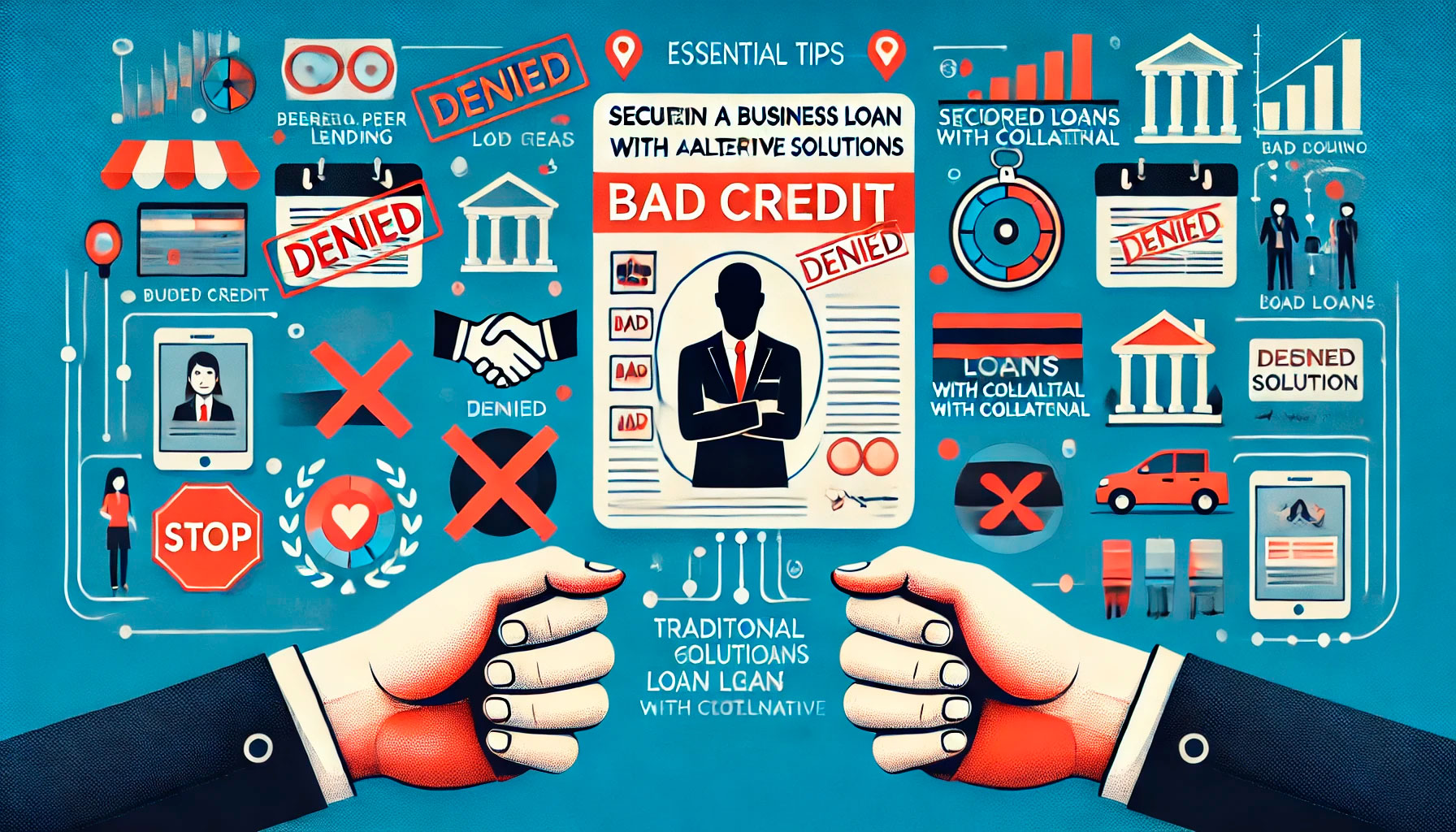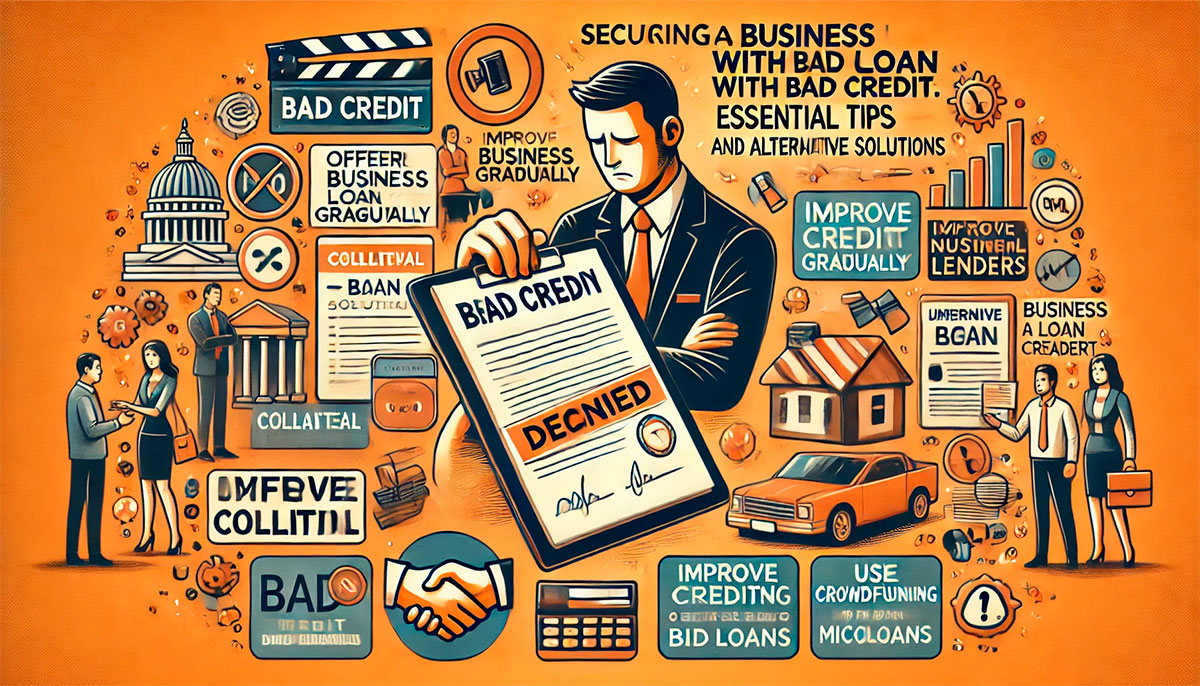
How to Secure a Business Loan with Bad Credit
Securing a business loan can be challenging, but it becomes even more difficult when you have bad credit. Many traditional lenders rely heavily on credit scores to assess a borrower’s risk, and poor credit can raise red flags. However, having bad credit doesn’t necessarily mean you’re out of options. There are strategies and alternative financing solutions that can help businesses with less-than-perfect credit secure the funding they need to grow and thrive. This guide will walk you through how to secure a business loan with bad credit and explore options available to you.
Understanding the Impact of Bad Credit
What Is Considered Bad Credit?
Credit scores typically range from 300 to 850, with higher scores indicating better creditworthiness. A score below 600 is generally considered bad credit. For businesses, this could mean that traditional lenders see you as a higher-risk borrower. Factors contributing to bad credit include missed payments, high credit utilization, and a lack of diverse credit history.
Bad credit doesn’t just affect loan approval—it can also lead to higher interest rates, shorter repayment terms, and more stringent lending conditions. Despite these challenges, there are still ways to secure a loan, but it will likely require more effort and creativity.
Steps to Secure a Loan with Bad Credit
1. Improve Your Credit Score Where Possible
Before applying for a loan, take some time to assess and improve your credit score if possible. This could involve paying down existing debts, disputing any errors on your credit report, and ensuring timely payments on all accounts. While it may take time to see significant improvements, even a small boost in your credit score can improve your chances of securing a loan and may help you qualify for better terms.
2. Provide Collateral
One of the most effective ways to mitigate the risks of bad credit is by offering collateral. Secured loans, which are backed by assets such as property, equipment, or inventory, can make lenders more willing to approve your loan despite your credit history. Collateral reduces the lender’s risk because they can seize the asset if the loan is not repaid. Keep in mind that failure to repay a secured loan could result in losing the asset, so be sure you can meet the repayment terms before opting for this solution.
3. Consider a Co-Signer
Another way to strengthen your loan application is by bringing on a co-signer. A co-signer is someone with strong credit who agrees to take responsibility for the loan if you default. Their good credit can help offset your bad credit and improve your chances of approval. This option should be considered carefully, as it involves a significant level of trust and responsibility for the co-signer.
4. Show Strong Cash Flow
Even if your credit score is less than ideal, demonstrating strong business cash flow can reassure lenders that you have the ability to repay the loan. Prepare detailed financial statements, including income and cash flow projections, to show that your business generates enough revenue to cover the loan payments. Lenders may be more willing to overlook a bad credit score if your business demonstrates financial stability and consistent revenue.

Alternative Financing Options
1. Microloans
Microloans are small loans typically ranging from $500 to $50,000 and are often offered by nonprofit organizations, community lenders, or government programs. These loans are designed to support small businesses and startups, making them more accessible to borrowers with bad credit. While the loan amounts are smaller, microloans can be a great way to get the capital you need without the strict credit requirements of traditional loans.
2. Invoice Financing
Invoice financing, also known as accounts receivable financing, allows businesses to borrow money against their outstanding invoices. Instead of waiting for customers to pay, you can receive a percentage of the invoice value upfront from a lender. Because the loan is secured by the unpaid invoices, lenders are less concerned about your credit score. This option can provide a quick influx of cash for businesses with slow-paying customers.
3. Merchant Cash Advances
A merchant cash advance (MCA) is another alternative for businesses with bad credit. With an MCA, a lender advances you a lump sum of money in exchange for a percentage of your daily credit card sales until the advance is repaid. While this option offers quick access to funds and typically doesn’t require a high credit score, it comes with higher fees and can be expensive in the long run. Be sure to understand the cost structure before committing to a merchant cash advance.
4. Peer-to-Peer Lending
Peer-to-peer (P2P) lending platforms connect borrowers with individual investors who are willing to fund loans. These platforms often have more flexible credit requirements compared to traditional banks, making them a viable option for those with bad credit. While interest rates may be higher for borrowers with poor credit, P2P lending can provide the capital needed when other options are limited.
Prepare a Strong Loan Application
1. Create a Detailed Business Plan
A strong business plan can help offset concerns about bad credit by showing lenders that you have a clear path to success. Your business plan should include detailed financial projections, a market analysis, and strategies for growth. Highlight how the loan will be used to improve the business and how you plan to repay it. Lenders are more likely to approve loans for businesses with a well-thought-out plan and a realistic roadmap to profitability.
2. Gather Financial Documentation
When applying for a loan, especially with bad credit, it’s crucial to provide comprehensive financial documentation. This includes bank statements, tax returns, cash flow statements, and any other documents that demonstrate the financial health of your business. Lenders want to see that your business is financially stable enough to repay the loan, even if your credit history is less than perfect.
3. Be Transparent About Your Credit Situation
Don’t try to hide your bad credit from lenders. Instead, be upfront about your situation and explain the reasons for your credit challenges. If your credit issues were due to a temporary setback, such as a past economic downturn or unexpected expenses, make that clear to the lender. Demonstrating transparency and showing a plan for improving your financial situation can increase a lender’s confidence in your ability to repay the loan.
Conclusion
Securing a business loan with bad credit may be challenging, but it’s not impossible. By improving your credit score where possible, providing collateral, or considering alternative financing options such as microloans, invoice financing, or peer-to-peer lending, you can increase your chances of getting the funding your business needs. Preparing a strong loan application with a detailed business plan and solid financial documentation is also crucial to overcoming the challenges associated with bad credit. With the right approach and a clear strategy, you can secure the financing necessary to grow and sustain your business, even with a less-than-perfect credit history.
You May Also Like

How to Prepare Financial Statements for a Successful Business Loan Application
September 29, 2024
Expanding Your Business with Short-Term vs. Long-Term Loans
June 15, 2024
